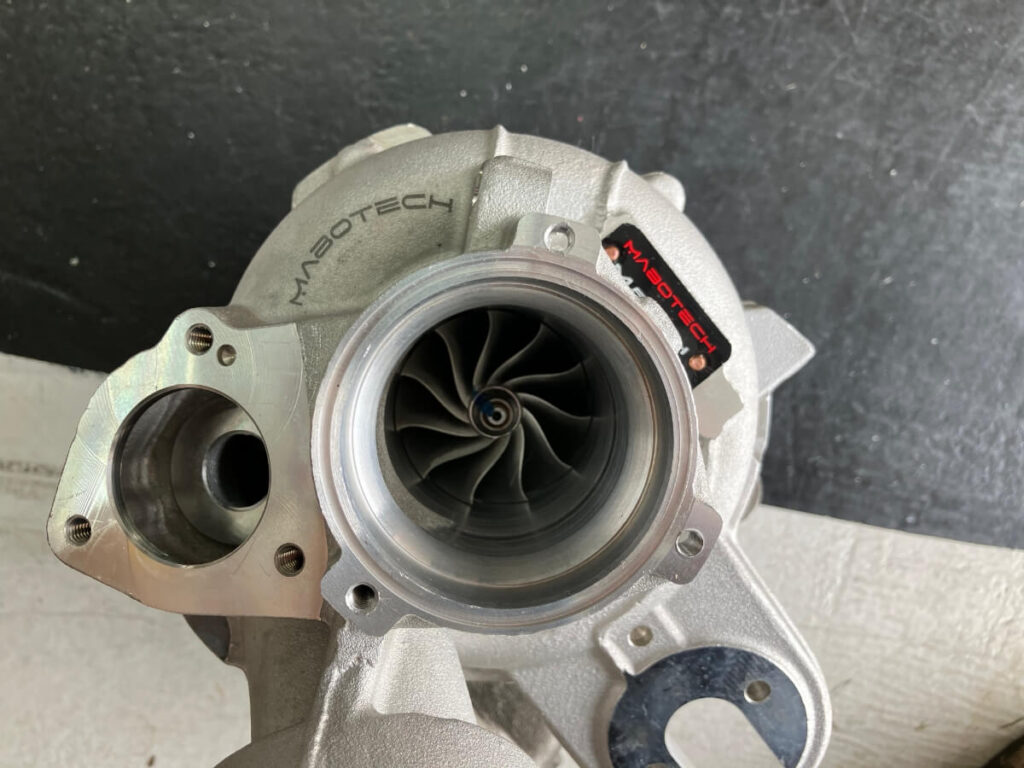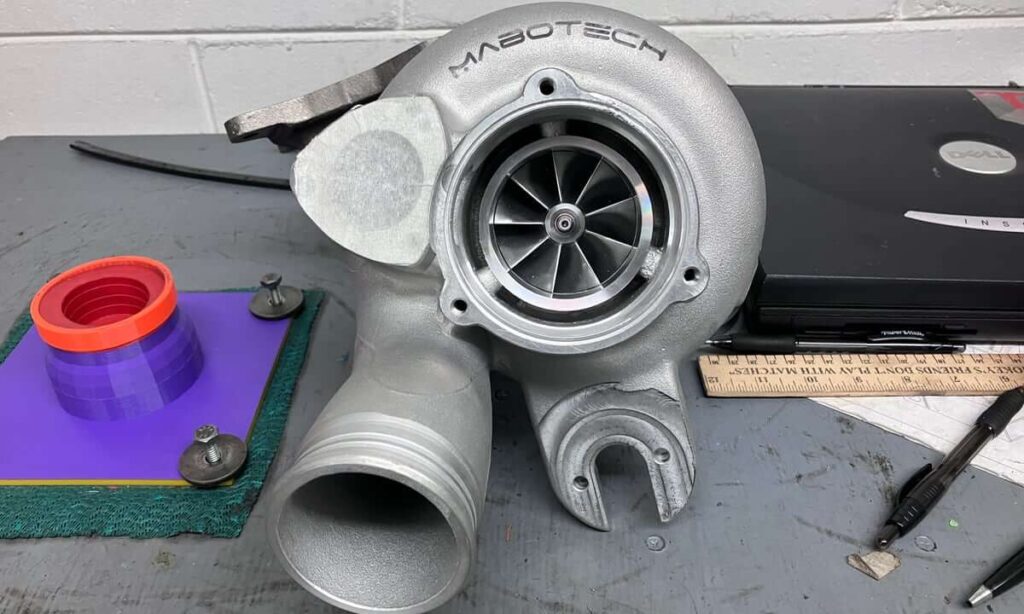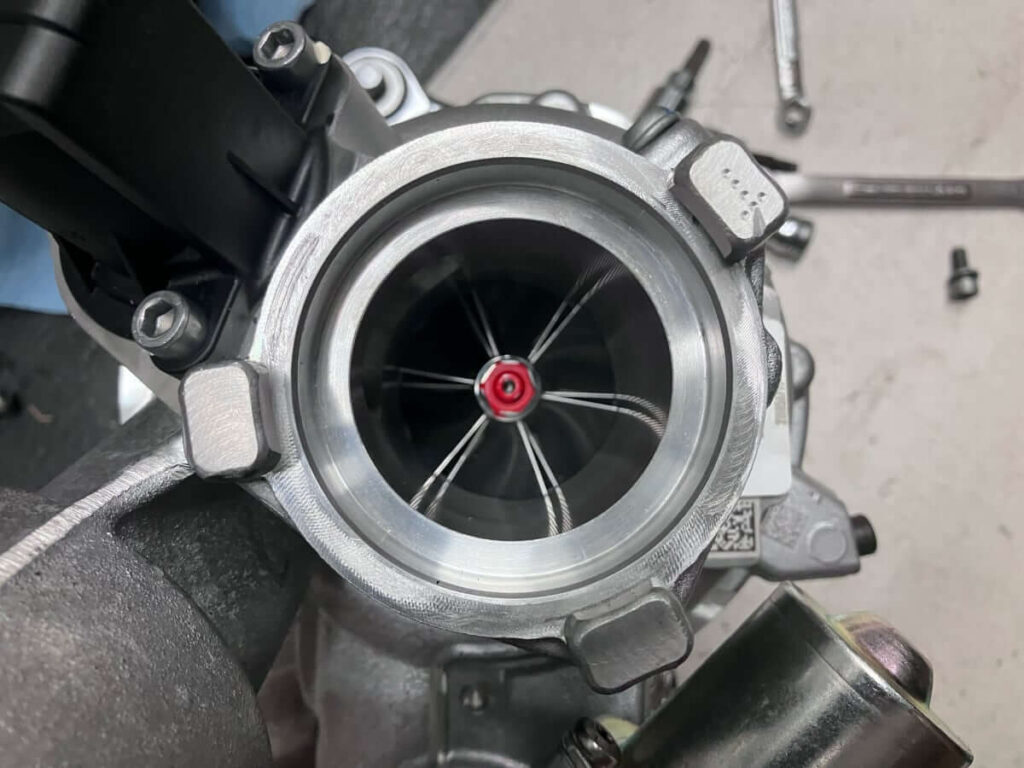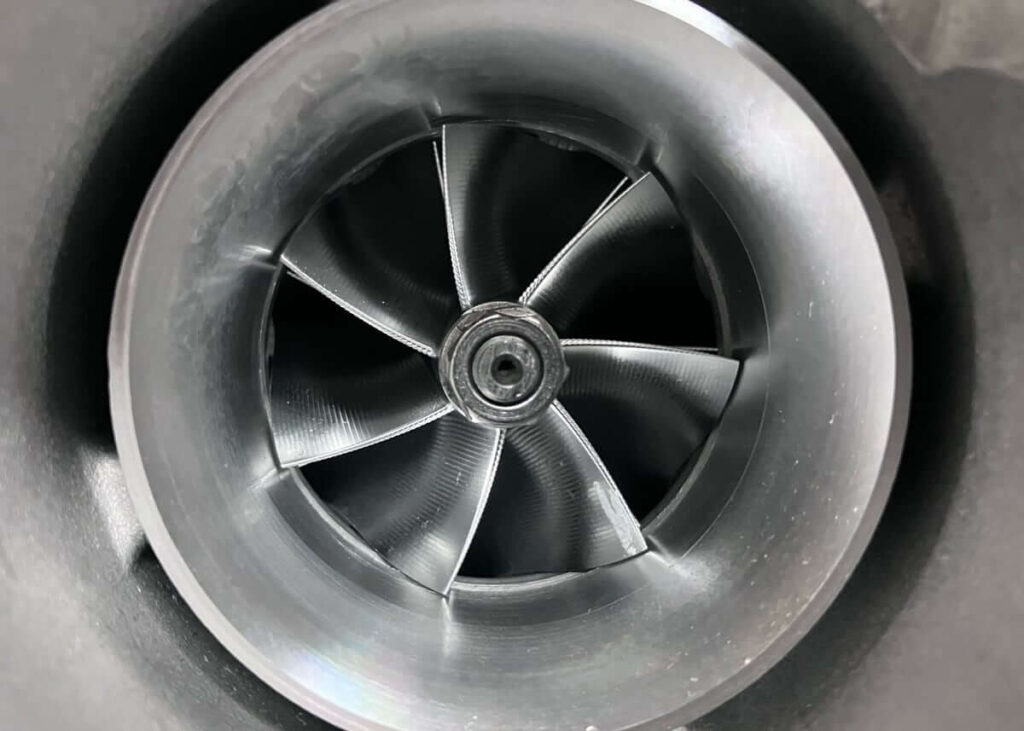Background:
This past year has seen a series of turbochargers installed on the GTI, each using a different attachment to join to the intake. This has posed challenges for developing the MGM7 intake, as I have revised the outlet several times.
For the latest update to the intake design, I reverted to an outlet suitable for joining with a conventional inlet elbow that has a 3″ inlet. A couple of examples of this type of turbo inlet are the MST V1 and V2 and the DBV2.
This change reduces the outlet diameter compared with the Beta-12 model. Another tweak with this revision is a slightly more gradual bend along the lower wall just before the outlet.

Test Setup:
The first test configuration is to have the intake attached to a constant diameter elbow that attaches to the flow bench with a 3″ adapter. This elbow is 3″ in diameter.

A Vibrant 10961 air filter is attached to the inlet end of the intake.
Then a DBV2 TIP was used with an adapter that simulates a hybrid turbo compressor housing inlet.

The final configuration was to attach the intake to a stock-sized turbo compressor inlet using the DBV2 TIP, then to an MST V1 TIP.
All configurations were tested using a flow bench. The direct to bench measurement was made at a depression of 16″ of H2O, and the tests with the commercial inlet elbows were made at 28″ of H2O.
Test Results:
The Beta-13 intake flows 578 CFM @ 16″ of H2O, shown in the chart below.

This is a small reduction compared to the Beta-12 and significantly higher than a commercial intake.
The outlets of the Beta-12 and Beta-13 intakes are compared in the image below.

The Beta-12 has an 85 mm outlet (Left) and the Beta-13 has a 73 mm outlet (Right).

The intake flows 523 CFM @ 28″ of H2O when attached to the DBV2 TIP and the hybrid turbo adapter. The same configuration, when attached to the stock-size turbo adapter, reduces airflow to 395 CFM @ 28″ of H2O.
The DBV2 TIP has a larger outlet than the stock turbo inlet, and the MST V1 elbow is a better size match to the stock-size turbo adapter, even though it is a smaller diameter. With the MST V1 TIP, the Beta-13 intake airflow increased to 412 CFM @ 28″ of H2O, illustrating the importance of matching components.
Results of tests with the three configurations are shown below.
Note: The flow rate for the direct test is estimated for 28″ of H2O since the flow rate would exceed the bench maximum of 600 CFM.

The significant contribution of the elbow to the overall flow rate is evident from the dramatic changes observed across configurations.
Test Fit:
Although I don’t presently have an elbow to join the intake to the Shuenk IS48 turbocharger, I still did a partial test fitting to get an idea of whether the intake might clear the components in the engine compartment.

Nothing concerning was found.

Bigger Picture:
An alternative I am looking into is using a smaller Vibrant air filter, model 10960, with a six-inch-diameter flange and a shorter length. This filter was part of the 6″ filter flow test and had performed well for its size. The benefit of the smaller filter is that it is easier to fit within the engine compartment.
For the usage I have in mind for this intake, the pressure losses it causes are unlikely to provide a practical benefit compared with the commercial alternatives I have tested most recently from APR, Blaze Performance, and Racingline, which it flows substantially higher than.
Because the inlet adapter to the turbocharger is the critical part of the intake path, and this is dictated by the size of the opening in the turbocharger’s compressor housing, the choice of turbocharger drives the importance of the intake.
Below is a histogram of the airflow measurements from 27 aftermarket intakes and the Beta-12 when attached to a stock-sized turbo inlet elbow.

This shows how tightly grouped all of the intakes are in an airflow range driven by the size of the compressor inlet. Having a very high-flow intake like the MGM7 is unnecessary, as the turbocharger inlet reduces overall airflow substantially.
The histogram below shows fourteen intakes tested with a hybrid-size inlet.

The range of airflow measurements is larger, indicating that the higher-flowing intake provides more benefits with this setup. But since I’m no longer using a large hybrid turbocharger, there’s likely no practical performance benefit to a higher-flow intake.
This consideration is factoring into the decision to try a smaller air filter. If it can still provide excess capacity and is easier to fit within the engine compartment, it will simplify the design process.
The next version of the MGM7 will be resized at the inlet to accommodate the smaller Vibrant air filter.
Conclusions:
The latest update to the MGM7 intake design incorporated a more gradual bend along the lower side of the intake leading to the outlet, along with a smaller diameter opening at the outlet.
A flow test with the Beta-13 model showed a small decrease of 10 CFM compared with the same test using the Beta-12 model.
A test fit without the turbocharger inlet elbow showed no interference with parts in the Mk7 engine compartment.




